
by California Casualty | Health, Safety |
About half of all Americans have been financially affected by the coronavirus. Many have lost jobs or are dealing with reduced hours, and those still working might be anxious about what’s on the horizon. Lean times—even the possibility of them—call for fiscal prudence.
Here are some tips to cut costs and put yourself and your family on better financial footing.
Evergreen Principles
These tips are wise moves in any economy, but especially important right now.
-
- Revise your budget. Depending on your family’s situation, your income and expenses might look very different from just a few months ago. Review with fresh eyes how much money is coming into and out of your household.
- Cut the fat. What are your essential expenses? For most people, it’s rent/mortgage, groceries, loans, and utility payments. For all other expenses, reassess what you really need—and don’t be afraid to make cuts.
- Lower your energy bill. Adjusting your thermostat just a few degrees can translate to dollars saved. Also, check your doors and windows for easy-to-fix gaps that may be leaking air.
- Consolidate your entertainment. Streaming services and subscriptions can add up quickly. Only keep those you use; and turn off “auto-renew.” Cutting your cable can also mean big savings.
- Check cell phone & internet bills. Your plans may have add-ons (extra data, faster speed, etc.) that you’ve forgotten about or don’t need. Ditch those, and then call to change or negotiate your plan—and don’t be afraid to switch providers (many will lower your bill to keep your business).
- Get smart on groceries. Plan meals ahead of time to reduce impulse buys at the store. Make large meals (soups, stews, salads) in big batches to last for days. Vegetarian meals are especially budget-friendly. Also, look at your food waste—and use what you buy.
Made for These Times
Sometimes crises come with opportunities; in the case of coronavirus, there are some new ways to save.
-
- Coronavirus resources. The federal assistance available to those impacted by coronavirus includes resources for unemployment, healthcare, loans, stimulus checks, and business aid. Check the site to see if you’re eligible.
- Free subscriptions. Many digital platforms are offering free subscriptions right now. From streaming services and educational programs to online workouts, you can find a lot just by doing a web search.
- Low refinance rates. The Federal Reserve’s recent slashing of the interest rate translates to very low rates on loans. If you were considering refinancing your mortgage or another large loan, this might be a great time.
- Lower debt interest. Federal student loan interest (along with principal) has been suspended until September 30, 2020. Check with your other creditors to see if they will work with you to lower your interest rate or temporarily suspend it.
- Eviction, rent, and mortgage protection. Due to widespread hardship, there are assistance programs available for rent and mortgage payments, as well as protection against eviction. Check your state’s programs and the Federal website.
- Summer Skip option. Educators who are California Casualty policyholders can opt to take a break from premium payments during the summer months.
If you’re able to, pad your healthcare and emergency savings as much as possible. If you’re expecting a tax refund (tax day has been extended to July 15), try to stash that in savings.
Hopefully, the lean times will be temporary, but you’ll never regret saving money where you could.
This article is furnished by California Casualty, providing auto and home insurance to educators, law enforcement officers, firefighters, and nurses. Get a quote at 1.866.704.8614 or www.calcas.com.
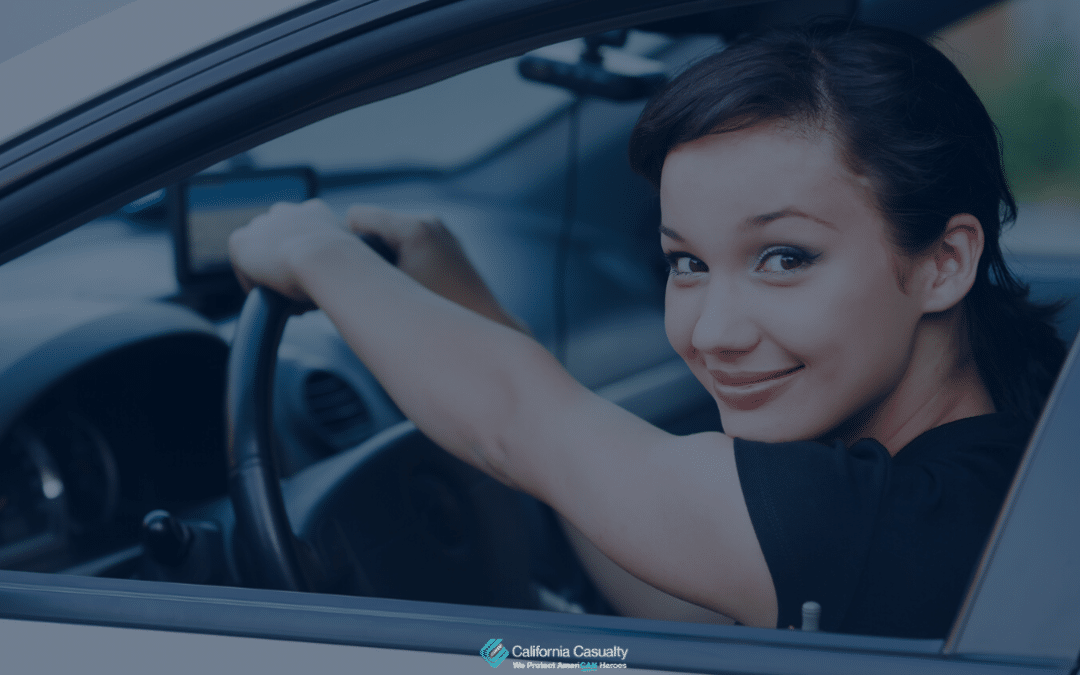
by California Casualty | Auto Insurance Info, Safety |
If you have a teen who will be driving soon, consider taking advantage of this extra time at home and teaching them the rules of the road. Preparation and knowledge always make a safer driver, and this extra time means your teen can learn in a no-rush environment and absorb the material at their own speed.
Remember that you have more influence on your teen than you may think. Share your driving experiences with them—lessons learned, close calls, even your mistakes. Stress safety as the top priority, always.
Here’s how you can prep your young driver for the road.
The Rules of the Road
The first step is for them to become familiarized with the basic laws and rules of driving. Look into driver education courses online. Classes are interactive and teach traffic laws, safe driving techniques, and the dangers and risks of the road.
Your state’s DMV website should also have plenty of resources, such as driver handbooks, driving tutorials, and sample written tests.
Tour the Vehicle
To help your teen get a feel for the vehicle, take them through all the features and controls—both inside and outside the car. First, inside:
-
- Location of owner’s manual, registration and insurance card
- Dashboard controls
- Windshield wipers
- Seat belts, airbags, and other safety features
- Steering wheel & seat adjustment
- Headlights, low beams, fog lights, and high beams
- Turn signals
- Emergency/parking brake
- Gas and brake pedals (and ABS)
- Cruise control
- Mirrors — location & adjustments
- Emergency lights & warning indicator lights
- Ignition
Next, take a tour around the outside of the vehicle:
-
- Overview of the engine, including the battery and 5 important fluids (engine oil, coolant, power steering fluid, brake fluid, and windshield washer fluid)
- Tires — reading PSI and correct inflation
- Location of safety items such as spare tire, jack, jumper cables, chains and emergency roadside kit (bonus: teach them how to change a tire)
- Taillights & brake lights
Remember to also explain things such as vehicle maintenance schedules (check the owner’s manual), safety ratings, and what to do in roadside emergencies.
Go for a Spin
If your teen has done well on the above, has a learner’s permit, and is covered by your insurance, it might be time for them to start practicing (depending on your city’s current stay at home orders).
Although streets should be relatively quiet, start first in a large, empty parking lot. Be sure to give directions in a clear, calm voice, and well in advance. Answer questions calmly and informatively. Give your teen time to learn at a comfortable pace. Take your time and gradually increase driving practice time.
Your state’s DMV should have lesson plans online for practice sessions. But in general, lessons start with the basics of starting the vehicle, making adjustments to controls, moving forward, stopping, backing up and turning, before moving on to lane changes, intersections, and practicing in traffic. Advanced lessons include parallel parking, freeway driving, and parking on hills.
Take the Pledge
Teen drivers are involved in more collisions than any other age group. Risk factors include distracted driving, risky behaviors behind the wheel, driving inexperience, and lack of maturity.
You can reinforce the responsibility and privilege of safe driving by signing a safe driving contract with your teen (samples here and here). You can also lead by example by joining your teen in taking a pledge against distracted driving: sign up for the National Safety Council’s Just Drive campaign or California Casualty’s Keep on Course campaign.
This article is furnished by California Casualty, providing auto and home insurance to educators, law enforcement officers, firefighters, and nurses. Get a quote at 1.866.704.8614 or www.calcas.com.
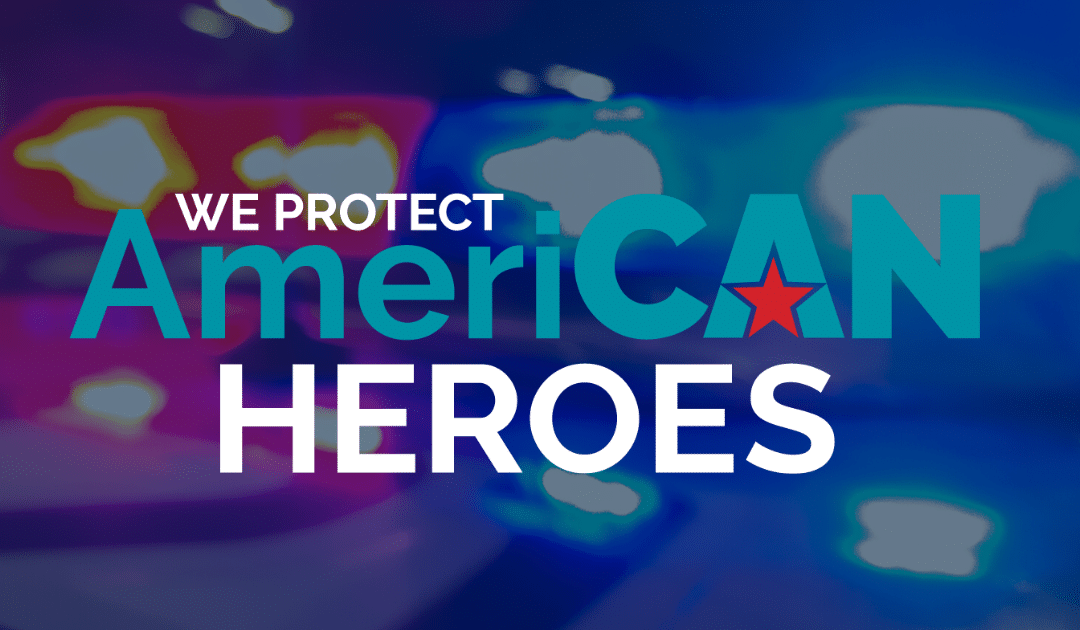
by California Casualty | Firefighters, Peace Officers |
Peace officers, firefighters, paramedics, and other emergency personnel are the American heroes on the frontlines of keeping our communities safe and in working order during this public health crisis.
They are working daily to ensure public safety, enforce laws, arrive first to emergencies, and provide reassurance to anxious communities. True to their sworn duty, they are stepping up to do what’s needed. Now is the time for the rest of us to step up and support them.
As cities and communities put plans in place to open their doors, here are 5 ways you can help your first responders.
Keep Your Distance
Across the country, various forms of shelter-in-place and social distancing orders will slowly be lifted. The basic idea of the orders was to limit exposure to others and ultimately, limit the spread of coronavirus infections. As life begins to return to it’s new “normal” it is important to remember to continue to keep your distance when out in public and avoid going out if you feel you are getting sick. By continuing to socially distance yourself in public and taking the necessary precautionary measures (like wearing a mask), you will help continue to slow the spread and you’ll also relieve officers’ time and energy in enforcement.
Don’t Abuse 9-1-1
Only call 9-1-1 if you, someone else, or property is in immediate danger. True emergencies include medical emergencies, violent crime, accidents, downed power lines, etc. Calls that are not actual emergencies overload the 9-1-1 system. That’s already an existing problem, and authorities worry it will escalate if the public health crisis continues, or gets worse, as cities begin to open their doors. If you have concerns about coronavirus symptoms that are not a medical emergency, contact your doctor or advice nurse.
Be Safe
Now is not the time for outdoor enthusiasts to put themselves in harm’s way by going rock climbing or wilderness hiking—even if it’s solo. Emergency evacuations and rescue cost resources and manpower. There’ll be time for adventures later; for now, follow the laws and be safe. Observe the speed limit, drive carefully, and be fire- and safety-conscious around your home. In short, remember that any emergency you create for first responders will strain their limited resources.
Call It In
If you need to report a non-emergency crime, file a police report, or add to an existing report, avoid going to the police station in person. Instead, submit your information online or over the phone. Avoiding walk-ins limit exposure risk to their ranks.
Be a Good Neighbor
Many of us know first responders and police officers personally. Whether they’re in your family, friend circle, or neighborhood, make a point to reach out and check-in. See if there’s anything you can do for them or their families. This could be something like dropping off food at the station, walking their dog, or just simply being someone to talk to. They have been and will continue to be overwhelmed—physically, mentally, and emotionally until this pandemic has resolved completely. Let them know you’re there for them.
Life will return back to normal, but to keep our first responder and healthcare systems from getting overwhelmed, it is important to remain vigilant on doing what we can to stay healthy and continue stopping the spread.
This article is furnished by California Casualty, providing auto and home insurance to educators, law enforcement officers, firefighters, and nurses. Get a quote at 1.866.704.8614 or www.calcas.com.
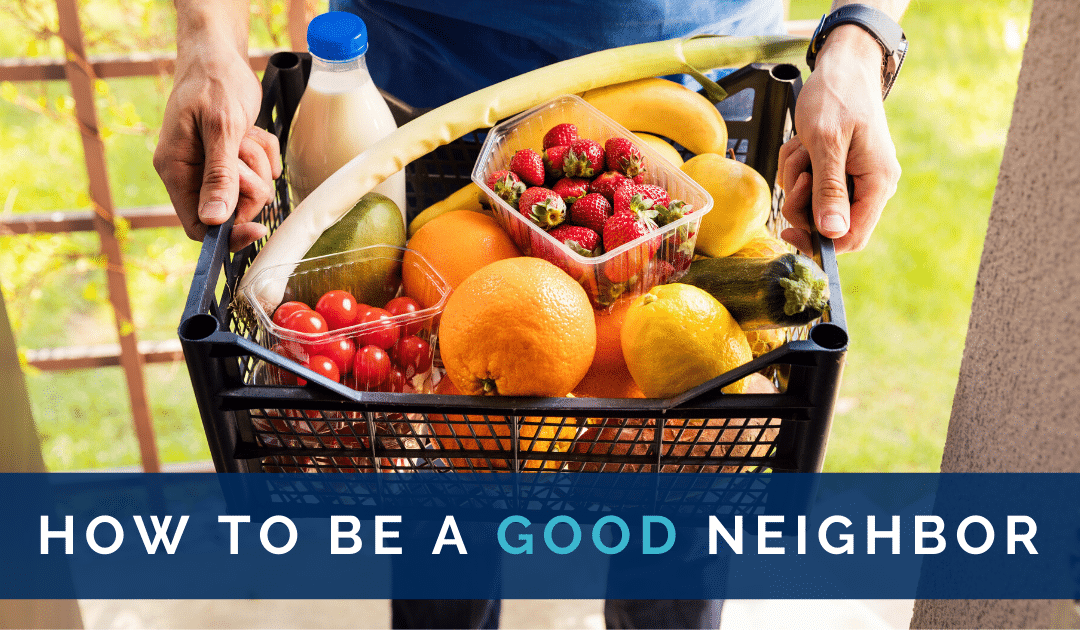
by California Casualty | Safety |
Our world has changed seemingly overnight. As we deal with the immediate crisis—and learn behaviors that ensure the safety and well-being of ourselves and others—we all have an opportunity to make our world a kinder and more generous one.
Here are 8 ways to be a good neighbor during trying times.
Stay safe, stay home
Across the country, various forms of shelter-in-place and social distancing orders have gone into effect. Stay up to date on your city’s instructions and follow the orders and advice of local officials. By slowing and limiting the spread of infection, we can “flatten the curve”—protecting vulnerable community members and preventing local hospitals and emergency services from overwhelm.
Check-in
For the elderly, immunocompromised or otherwise vulnerable, these are especially scary times. Reach out to those neighbors and friends (on the phone, email, through a closed door) and see if there’s anything you can do for them. A grocery run, food pickup or dog walk could make a huge difference. Let them know you’re there for them. If you yourself are in the vulnerable cohort, make it easy for others to know how they can help—there are plenty who want to help but don’t know how.
Donate blood
In the midst of coronavirus anxiety, blood drives have been canceled and donations have dropped. However, maintaining our nation’s blood supply is still critical: Every 2 seconds, a patient needs a blood transfusion. If you’re healthy, consider giving blood. Donation centers are skilled in infection control practices and adhere to strict safety procedures.
Do a virtual food drive
You can deliver needed groceries to families and community members right from your computer. Check the websites of your local food banks, city or city health departments or non-profits that focus on food insecurity. You can sign up as an individual or as a group. For the latter, get creative and launch a drive with friends, family, colleagues or neighbors.
Volunteer
Check with local non-profits, charities or your city for volunteer needs. Many neighborhoods are also forming their own emergency response teams. Volunteers can sign up for a range of activities or projects. If you have the gift of health and security, volunteering is one of the most rewarding ways to pay it forward.
Shop local
Local businesses are hurting, and some may not recover. Patronage right now is more crucial than ever. Place orders online; buy gift cards; keep up your membership. Many restaurants are staying afloat by offering take-out and delivery—if you can afford it, mix up your in-home creations with local cuisine. And if you can be generous in tipping your delivery drivers, you’ll be helping them through a rough time.
Donate
Public health crises spotlight the gaps in our communities and this crisis is no different. Many hospitals are in need of gloves, goggles, N95 masks, disinfectant wipes, hand sanitizer, gowns, and other PPE. Look through your closets and garage and see if you’ve got extras (new and unused) you can donate to local hospitals. Also check in with your favorite charities, causes or non-profits and see how you can help.
Spread kindness
These are stressful times, and a little kindness goes a long way. For those workers on the front lines (who themselves are at increased risk), receiving some patience, kindness, and compassion from customers will buoy their spirits. Be generous where you can. Remember too, that just as with the oxygen mask in the airplane, you can only take care of others after taking care of yourself. So, find ways to make self-care and mental health a priority.
This article is furnished by California Casualty, providing auto and home insurance to educators, law enforcement officers, firefighters, and nurses. Get a quote at 1.866.704.8614 or www.calcas.com.
by California Casualty | Calcas Connection, In Your Community |
Celebrating the great work that you do and giving to others are important aspects of the California Casualty culture. We believe in giving back through important community impact initiatives and charity that makes a real difference.
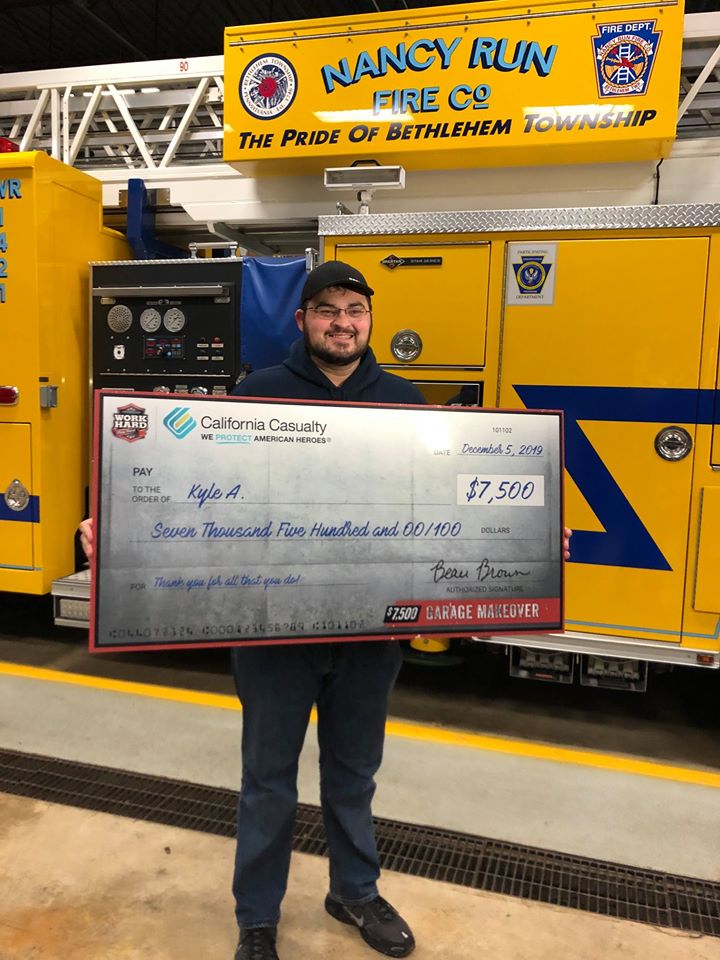
Garage Makeover winner Kyle A.
We’ve been thanking first responders over the years for the hard work they do protecting our communities, with the Work Hard/Play Hard Sweepstakes.
In December, Pennsylvania firefighter Kyle A. was the recipient of a $7,500 Garage Makeover from California Casualty. Kyle, who is also a full-time 911 dispatcher, was thrilled. “My wife and I bought our forever home last year and we just purchased a storage shed so that we could clean out the garage to make it more useful,” he said.
He added that while he doesn’t seek recognition for what he does, he is grateful that California Casualty recognizes the hard work done by first responders.
While we are talking about firefighters, California Casualty wants to congratulate San Bernardino County, California, Fire EMT Kyle A. (a different K.A.). He is the grand prize winner of the California State Firefighters’ Association’s photo contest, sponsored by California Casualty.
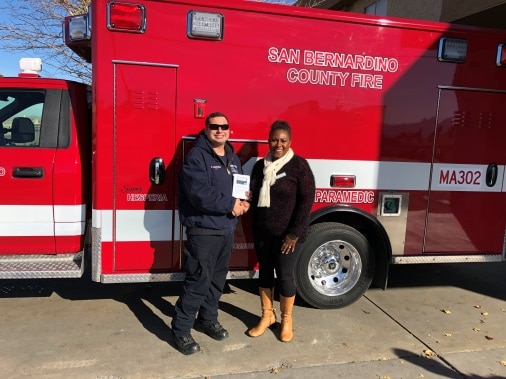
Kyle receiving his award from Field Marketing Manager, Charlene Rowens
The contest invited first responders to submit images highlighting the bravery and camaraderie of the men and women in the fire service and the explosive situations they encounter in their daily shifts. Kyle’s photo of Los Angeles firefighters battling a commercial auto parts blaze was a quarterly winner in the contest and will be featured on an upcoming cover of The California Fire Service magazine. Quarterly winners received cash prizes from California Casualty for their efforts.
You can see some of the amazing and outstanding pictures submitted to the CSFA/California Casualty photo contest here.
Knowing the challenges and expenses new teachers face when setting up their classrooms as full-time educators, California Casualty introduced a $500 New Teacher Shopping Spree for student members of the NEA.
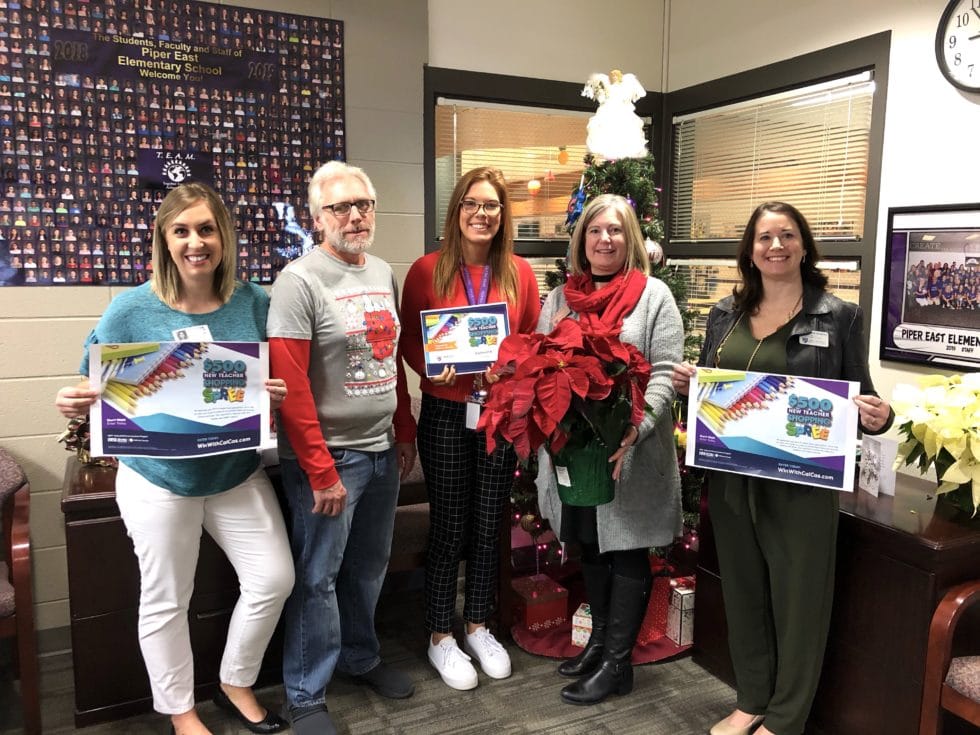
Shopping Spree Winner Katherine (center) with California Casualty’s Gabby Sole (left) and KNEA representatives.
Ms. Kirchhoff, a KNEA member, applied for the award while she was a student teacher in Olathe. She was hired this year to teach 4th grade at Piper East Elementary School in Kansas City.
“I am so thankful for this giveaway from California Casualty,” she said. “Being a first-year teacher, I didn’t realize all of the things I would need, and this money is going to help me get supplies that I planned to purchase for my classroom and students.”
Ms. Kirchhoff will use the funds for essentials, such as Expo markers, pens, paper, and other materials that will benefit her students.
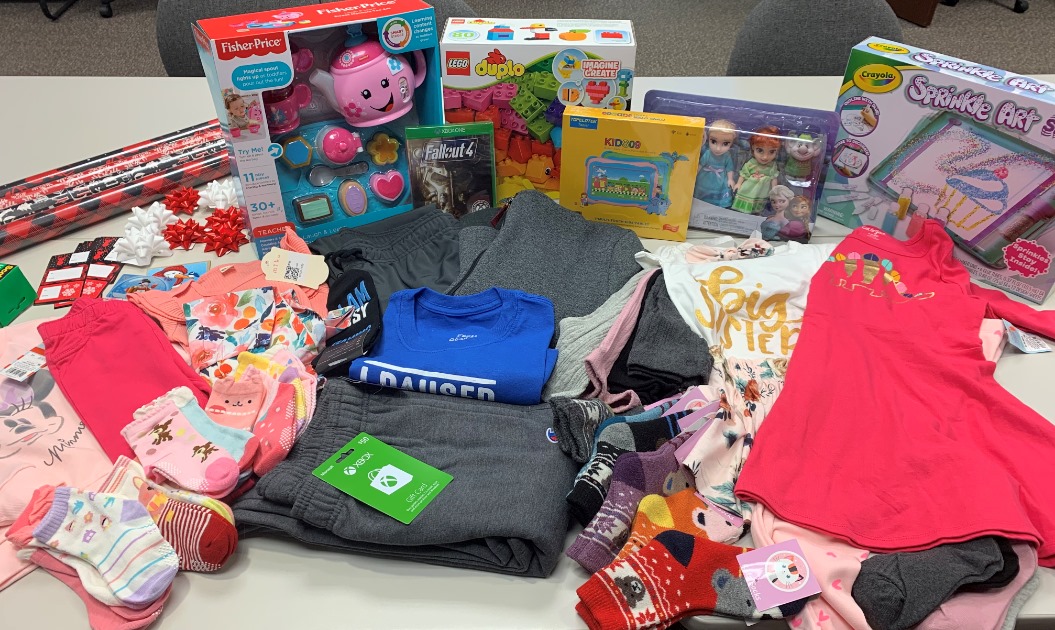
Kansas Service Center’s Salvation Army Family Donations
To brighten the holidays for others, employees at our Kansas and Colorado Springs service centers chose to make a difference for families in need.
The Kansas Service Center Employee Activities Committee (EAC) adopted a family of four through the local Salvation Army. They bought dozens of toys, piles of clothing and hundreds of dollars in grocery gift cards to provide a joyous holiday for the three children and one adult.
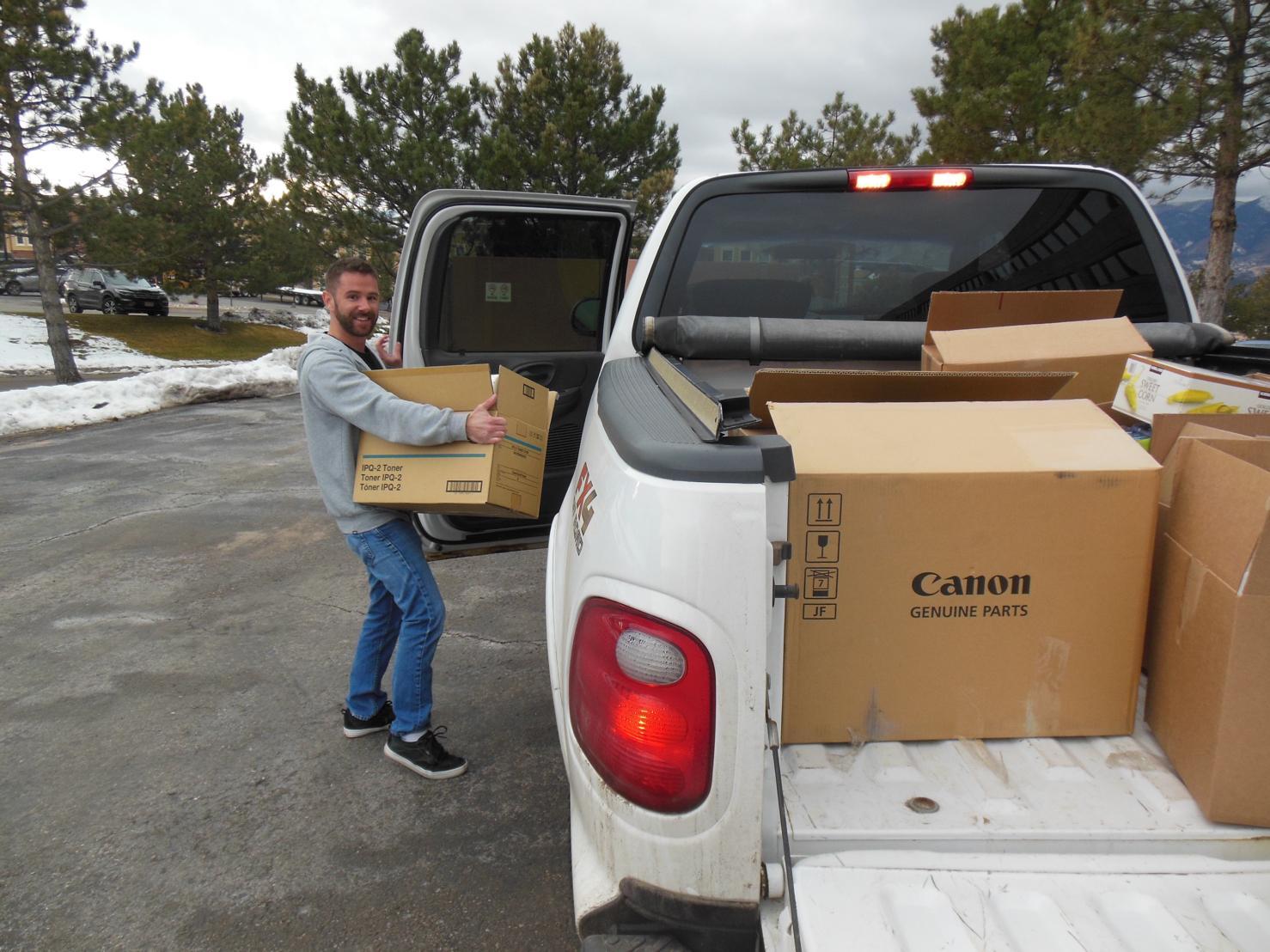
Colorado Service Center’s Silver Key Donations filling the bed of a truck.
The EAC in Colorado Springs asked employees to purchase high-protein, nonperishable foods and personal care items for Silver Key Senior Services, which gives assistance to the elderly, many of whom are shut-ins or have very little family support.
The donations helped stock the emergency food pantry, which gets depleted during the holidays. Our employees brought in enough food and care items to fill the bed and cab of an EAC member’s pickup truck.
TAKEAWAY: See the many ways that we say thanks to the men and women who make our communities better, by visiting the Community Impact page of our blog, https://mycalcas.com/community.









